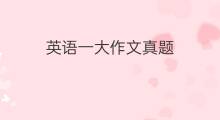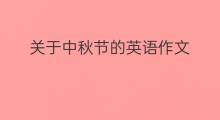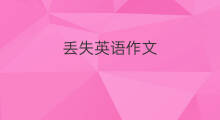关于”标点符号空格“的英语作文范文2篇,作文题目:Punctuation Spacing。以下是关于标点符号空格的专业英语范文,每篇作文均为万能范文带翻译。
高分英语作文1:Punctuation Spacing
英语作文中标点符号的使用非常重要,它们可以帮助读者理解文章的意思,使文章更清晰易懂。以下是常用标点符号的使用方法和中英翻译:
1. 句号 (.):标志一个句子的结束,常用于陈述句、命令句和感叹句。
示例:I love to travel.(我喜欢旅行。)
2. 逗号 (,):分隔句子中的短语或从句,使文章更易读。
示例:I am studying English, and my brother is learning Spanish.(我正在学习英语,我的兄弟正在学习西班牙语。)
3. 问号 (?):用于表示疑问句的结尾。
示例:Where are you going?(你去哪里?)
4. 感叹号 (!):用于表示强烈的表达或感情。
示例:Wow! This is amazing!(哇!这太神奇了!)
5. 冒号 (:):引出一个列表或说明。
示例:There are three things I like: reading, traveling, and playing sports.(我喜欢三件事情:阅读、旅行和运动。)
6. 分号 (;):分隔两个独立的句子或在列举一系列短语时使用。
示例:I have a lot of homework to do; however, I still want to watch a movie tonight.(我有很多作业要做;不过,我今晚还是想看电影。)
7. 斜杠 (/):表示两个选择或意见之间的关系。
示例。)
8. 破折号 (-):用于表示偏离主题的信息或引出新的想法,也可分隔两个短语。
示例:I love swimming – it’s my favorite sport.(我喜欢游泳——它是我最喜欢的运动。)
以上就是英语作文中常用标点符号的使用方法和中英翻译,希望能够帮助您写出更加清晰、易懂的文章。
万能作文模板2:标点空格
Punctuation Spaces in English Writing
In English writing, punctuation marks play an essential role in conveying meaning and enhancing readability. Apart from the correct usage of punctuation marks, the appropriate spacing around them is equally important. In this article, we will explore the significance of using spaces around punctuation marks and provide some guidelines for their usage.
在英语写作中,标点符号在传递意义和提高可读性方面起着至关重要的作用。除了正确使用标点符号外,围绕它们使用适当的空格同样重要。在本文中,我们将探讨在标点符号周围使用空格的重要性,并提供一些使用标点符号空格的准则。
1. Commas (逗号):
Commas are used to separate items in a list, to join clauses, and to indicate pauses in a sentence. When using commas, it is important to include a single space after the comma to maintain clarity and readability. For example:
- I like to eat apples, oranges, and bananas.
- She is studying English, and he is learning French.
逗号用于分隔列表中的项、连接从句以及表示句子中的停顿。在使用逗号时,重要的是在逗号后面加入一个单独的空格,以保持清晰和可读性。例如:
- 我喜欢吃苹果、橙子和香蕉。
- 她正在学习英语,他正在学习法语。
2. Periods (句号):
Periods mark the end of a sentence. It is essential to place a single space after a period to indicate the end of one thought and the start of another. For example:
- I am going to the grocery store. Do you need anything?
句号标志着句子的结束。在句号后面放置一个单独的空格非常重要,以表示一个思想的结束和另一个思想的开始。例如:
- 我要去杂货店。你需要什么吗?
3. Question and Exction Marks (问号和感叹号):
Question marks and exction marks denote interrogative and exctory sentences, respectively. Similar to periods, a single space should follow these marks. For example:
- What is your favorite color? I can't believe it!
问号和感叹号分别表示疑问和感叹句。与句号类似,这些标点符号后面应该有一个单独的空格。例如:
- 你最喜欢的颜色是什么!
4. Quotation Marks (引号):
Quotation marks are used to indicate direct speech or a citation. In English writing, spaces are not typically used between the quotation marks and the enclosed text. For example:
- He said, "I love reading books."
- The famous saying goes, "Actions speak louder than words."
引号用于表示直接引言或引用。在英语写作中,引号和内部文本之间通常不使用空格。例如:
- 他说:“我喜欢读书。”
- 著名的谚语是:“行动胜过言辞。”
In conclusion, the appropriate use of spaces around punctuation marks is crucial in English writing. These spaces contribute to better readability and ensure the correct interpretation of the intended meaning. By following the guidelines mentioned above, students can improve their writing skills and become proficient in using punctuation marks with the correct spacing.
总之,在英语写作中适当使用标点符号空格是至关重要的。这些空格有助于提高可读性,并确保对预期意义的正确解读。通过遵循上述准则,学生可以提高写作技巧,熟练地使用标点符号与正确的间距。
满分英语范文3:标点符号空格
There's a famous old story about an optimist and a pessimist / a glass and a half of water is put in front of them for inspection / they are asked to describe what they see / I see the optimist happily saying that the cup is half full / I see the pessimist sigh and say a half empty cup, there is an optimist and a pessimist in front of them Put a glass and a half of water, let them describe what they saw, the optimist said happily, a half full cup I saw, the pessimist sighed, a half empty glass I saw, the optimist happily said, half full glass 1 (1) she moved the box slowly, carefully and deliberately, she moved the box slowly, carefully and deliberately (1) Shakespeare's plays / boys' books; 2. The teacher has only four A's in his class; 3) let's (= let us) / I have (= I have (2) hyphens (1) world famous ② colleagues ③ ④ B Er / or / ingc D legendlegende alonealone F If you don't mind.
中文翻译:
有一个著名的古老故事,讲的是一个乐观主义者和一个悲观主义者/一杯半杯水摆在他们面前让他们检查/他们被要求描述他们看到了什么/我看到乐观者高兴地说半满的杯子/我看到悲观者叹了一口气说了一个半空的杯子有一个关于乐观主义者和悲观主义者在他们面前放了一杯半杯水,让他们描述一下他们看到了什么,乐观者高兴地说,一杯半满的杯子我看到了,悲观者叹了一口气说,一杯半空的杯子我看到了,乐观者高兴地说,半满的玻璃杯1⑴她慢慢地,小心地,故意地移动盒子,她慢慢地,小心地,故意地移动盒子⑵(哈姆雷特/哈姆雷特·温特的故事/冬天的故事/⑶⑷⒉⑴撇号('①莎士比亚的戏剧/男孩的书②老师在他的班上只有四个a③ 让我们(=让我们)/我已经(=我有(2)连字符(①世界著名的②同事③③④b er/或/ingc d legendlegende alonealone f DISPEARY令人心痛的)VirguleSlash(/可能是给教职工和/或学生的床/床/3)⑴⑵如果你不介意的话(①②①②②)。
本文来自投稿,不代表逐光英语立场,如若转载,请注明出处









评论列表(68条)